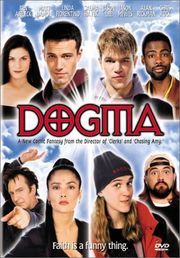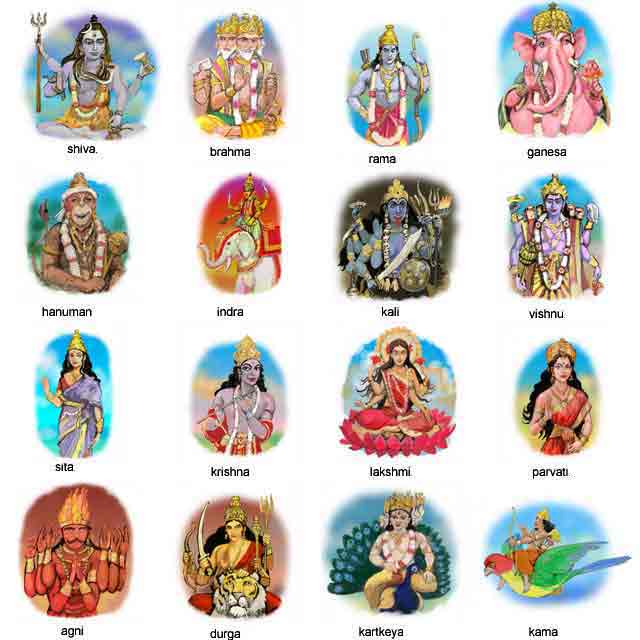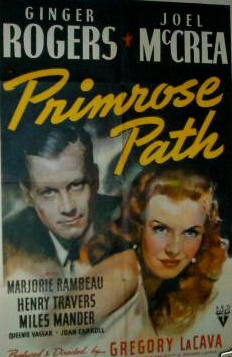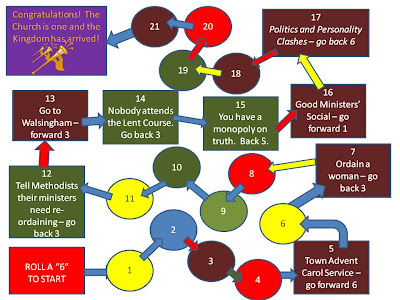Thank-you for all of the cool videos, magamud. I watch all of them, but I often don't comment on them. You know, deep thinking is SO overrated -- especially concerning life, the universe, and everything. Often, trying to make things better seems to make things worse. Giving people what they want -- and telling them what they wish to hear -- seems to work MUCH better. We seem to WISH to be lied-to and exploited. We seem to NOT want the truth -- even though we often say that we do. "Tell Us the Truth" seems to mean "Tell Us What We Wish to Hear". Perhaps Purgatory Incorporated is the way things MUST be -- especially with high-technology, low-responsibility, and low-spirituality. I just think it might be sickening to be the CEO with a Conscience -- of Purgatory Incorporated. Perhaps a very-real "Anna" is the CEO -- and why it might be necessary to pass that "V Empathy Test" with flying-colors, to be able to successfully participate in Solar System Governance. I wish I were kidding. I keep thinking that people are good when they think they can't get away with being bad. I continue to think that we aren't as good as we often think we are. Is the heart of mankind desperately wicked?? Is it the soul, or the physicality, which is most problematic?? What if our souls are not advanced enough to responsibly incarnate our present physicality?? I think that when I REALLY understand my own thread -- I'll probably REALLY lose-it -- which is probably a major reason why I'm privatizing my research. If no one is following you when you go in the ditch -- no harm, no foul. It's easier and neater that way. Anyway, India continued.
http://en.wikipedia.org/wiki/IndiaClothing
Cotton was domesticated in India by 4000 B.C.E. Traditional Indian dress varies in colour and style across regions and depends on various factors, including climate and faith. Popular styles of dress include draped garments such as the sari for women and the dhoti or lungi for men. Stitched clothes, such as the shalwar kameez for women and kurta–pyjama combinations or European-style trousers and shirts for men, are also popular.[300] Use of delicate jewellery, modelled on real flowers worn in ancient India, is part of a tradition dating back some 5,000 years; gemstones are also worn in India as talismans.[301]
Cuisine
Indian cuisine features an unsurpassed reliance on herbs and spices, with dishes often calling for the nuanced usage of a dozen or more condiments;[302] it is also known for its tandoori preparations. The tandoor, a clay oven used in India for almost 5,000 years, grills meats to an "uncommon succulence" and produces the puffy flatbread known as naan.[303] The staple foods are wheat (predominantly in the north),[304] rice (especially in the south and the east), and lentils.[305] Many spices that have worldwide appeal are native to the Indian subcontinent,[306] while chili pepper, native to the Americas and introduced by the Portuguese, is widely used by Indians.[307] Āyurveda, a system of traditional medicine, used six rasas and three guṇas to help describe comestibles.[308] Over time, as Vedic animal sacrifices were supplanted by the notion of sacred-cow inviolability, vegetarianism became associated with high religious status and grew increasingly popular,[309] a trend aided by the rise of Buddhist, Jain, and bhakti Hindu norms.[310] India has the world's highest concentration of vegetarians: a 2006 survey found that 31% of Indians were lacto vegetarian, and another 9% were ovo-lacto vegetarianism.[310] Common traditional eating customs include meals taken on or near the floor, caste and gender-segregated dining,[311][312] and a lack of cutlery in favour of the right hand or a piece of roti.
Science and technology
India has only 140 researchers per 1,000,000 population, compared to 4,651 in the United States.[313] India invested US$3.7 billion in science and technology in 2002–2003.[314] The ancient institutions of Taxila and Nalanda are sometimes considered the world's first universities.[315][316]
In mathematics, the positional Hindu–Arabic numeral system was developed and the use of zero as a number was introduced. Brahmagupta discovered the rules of arithmetic governing negative numbers and zero.[317] In physics, theories about atoms date as early as the 5th century B.C.E.[318] Satyendra Nath Bose, after whom the class of particles Bosons are named after, provided the foundation for Bose–Einstein statistics and the Bose–Einstein condensate. Jagadish Chandra Bose worked on wireless communication and was named one of the fathers of radio science by the IEEE.[319] In biological sciences, variolation, a form of inoculation to produce immunity to disease, probably originated in India and reached Europe by the 18th century.[320] Vaccination, a safer form of inoculation, was used in crude form in India before the more advanced vaccination of Edward Jenner.[321] A team led by Yellapragada Subbarao synthesised methotrexate,[322] one of the earliest and most commonly used chemotherapy drug. Dilip Mahalanabis's Oral rehydration therapy (ORT) methods to treat diarrhea, the leading cause of infant mortality in developing countries before ORT, have been called, "the most important medical advance [of the 20th] century" by the Lancet.[323]
Sport
In India, several traditional indigenous sports remain fairly popular, among them kabaddi, kho kho, pehlwani and gilli-danda. Some of the earliest forms of Asian martial arts, such as kalarippayattu, musti yuddha, silambam, and marma adi, originated in India. The Rajiv Gandhi Khel Ratna and the Arjuna Award are the highest forms of government recognition for athletic achievement; the Dronacharya Award is awarded for excellence in coaching. Chess, commonly held to have originated in India as chaturaṅga, is regaining widespread popularity with the rise in the number of Indian grandmasters.[324][325] Pachisi, from which parcheesi derives, was played on a giant marble court by Akbar.[326] The improved results garnered by the Indian Davis Cup team and other Indian tennis players in the early 2010s have made tennis increasingly popular in the country.[327] India has a comparatively strong presence in shooting sports, and has won several medals at the Olympics, the World Shooting Championships, and the Commonwealth Games.[328][329] Other sports in which Indians have succeeded internationally include badminton,[330] boxing,[331] and wrestling.[332] Football is popular in West Bengal, Goa, Tamil Nadu, Kerala, and the north-eastern states.[333]
Field hockey in India is administered by Hockey India. The Indian national hockey team won the 1975 Hockey World Cup and have, as of 2012, taken eight gold, one silver, and two bronze Olympic medals, making it the sport's most successful team. India has also played a major role in popularising Cricket. Thus, cricket is, by far, the most popular sport of India. The Indian national cricket team won the 1983 and 2011 Cricket World Cup events, the 2007 ICC World Twenty20, shared the 2002 ICC Champions Trophy with Sri Lanka, and won 2013 ICC Champions Trophy. Cricket in India is administered by the Board of Control for Cricket in India, or BCCI; the Ranji Trophy, the Duleep Trophy, the Deodhar Trophy, the Irani Trophy, and the NKP Salve Challenger Trophy are domestic competitions. The BCCI conducts a Twenty20 competition known as the Indian Premier League. India has hosted or co-hosted several international sporting events: the 1951 and 1982 Asian Games; the 1987, 1996, and 2011 Cricket World Cup tournaments; the 2003 Afro-Asian Games; the 2006 ICC Champions Trophy; the 2010 Hockey World Cup; and the 2010 Commonwealth Games. Major international sporting events held annually in India include the Chennai Open, the Mumbai Marathon, the Delhi Half Marathon, and the Indian Masters. The first Indian Grand Prix featured in late 2011.[334] India has traditionally been the dominant country at the South Asian Games. An example of this dominance is the basketball competition where Team India won three out of four tournaments to date.[335]
Notes
a.^ "[...] Jana Gana Mana is the National Anthem of India, subject to such alterations in the words as the Government may authorise as occasion arises; and the song Vande Mataram, which has played a historic part in the struggle for Indian freedom, shall be honoured equally with Jana Gana Mana and shall have equal status with it." (Constituent Assembly of India 1950).
b.^ "The country's exact size is subject to debate because some borders are disputed. The Indian government lists the total area as 3,287,260 km2 (1,269,220 sq mi) and the total land area as 3,060,500 km2 (1,181,700 sq mi); the United Nations lists the total area as 3,287,263 km2 (1,269,219 sq mi) and total land area as 2,973,190 km2 (1,147,960 sq mi)." (Library of Congress 2004).
c.^ See also: Official names of India
d.^ The Government of India regards Afghanistan as a bordering country, as it considers all of Kashmir to be part of India. However, this is disputed, and the region bordering Afghanistan is administered by Pakistan. Source: "Ministry of Home Affairs (Department of Border Management)" (DOC). Retrieved 1 September 2008..
e.^ The northernmost point under Indian control is the disputed Siachen Glacier in Jammu and Kashmir; however, the Government of India regards the entire region of the former princely state of Jammu and Kashmir, including the Northern Areas administered by Pakistan, to be its territory. It therefore assigns the longitude 37° 6' to its northernmost point.
Citations
1.^ a b c d e National Informatics Centre 2005.
2.^ Wolpert 2003, p. 1.
3.^ a b "National Symbols | National Portal of India". India.gov.in. Retrieved 2013-07-06.
4.^ "Eighth Schedule". Retrieved 1 July 2013.
5.^ "Chief Justice of India & Sitting Hon'ble Judges". Supreme Court of India.
6.^ a b c d e Ministry of Home Affairs 2011.
7.^ a b c "Report for Selected Countries and Subjects". Imf.org. 14 September 2006. Retrieved 2013-03-08.
8.^ "GDP (current US$) Data in 2012". IMF. Retrieved 4 March 2013.
9.^ "Gini Index". World Bank. Retrieved 2 March 2011.
10.^ United Nations 2012.
11.^
http://hdr.undp.org/en/media/HDR2013_EN_Statistics.pdf12.^ Stein 1998, pp. 16–17.
13.^ a b "GDP (current US$) Data in 2011". World Bank database. Retrieved 5 September 2012.
14.^ Oxford English Dictionary.
15.^ a b Kuiper 2010, p. 86.
16.^ Ministry of Law and Justice 2008.
17.^ Kaye 1997, pp. 639–640.
18.^ Encyclopædia Britannica.
19.^ Singh 2009, p. 64.
20.^ Singh 2009, pp. 89–93.
21.^ Possehl 2003, pp. 24–25.
22.^ Kulke & Rothermund 2004, pp. 21–23.
23.^ a b Singh 2009, p. 181.
24.^ Possehl 2003, p. 2.
25.^ a b c Singh 2009, p. 255.
26.^ a b Singh 2009, pp. 186–187.
27.^ Witzel 2003, pp. 68–69.
28.^ Kulke & Rothermund 2004, p. 31.
29.^ Stein 2010, p. 47.
30.^ Kulke & Rothermund 2004, pp. 41–43.
31.^ a b Singh 2009, pp. 250–251.
32.^ a b c d Singh 2009, p. 319.
33.^ Kulke & Rothermund 2004, pp. 53–54.
34.^ a b Kulke & Rothermund 2004, pp. 54–56.
35.^ Thapar 2003, p. 166.
36.^ Stein 1998, p. 21.
37.^ Stein 1998, pp. 67–68.
38.^ Singh 2009, pp. 312–313.
39.^ Singh 2009, p. 300.
40.^ Stein 1998, pp. 78–79.
41.^ Kulke & Rothermund 2004, p. 70.
42.^ Singh 2009, p. 367.
43.^ Kulke & Rothermund 2004, p. 63.
44.^ Stein 1998, pp. 89–90.
45.^ Singh 2009, pp. 408–415.
46.^ Stein 1998, pp. 92–95.
47.^ Kulke & Rothermund 2004, pp. 89–91.
48.^ a b c Singh 2009, p. 545.
49.^ Stein 1998, pp. 98–99.
50.^ a b Stein 1998, p. 132.
51.^ a b c Stein 1998, pp. 119–120.
52.^ a b Stein 1998, pp. 121–122.
53.^ a b Stein 1998, p. 123.
54.^ a b Stein 1998, p. 124.
55.^ a b Stein 1998, pp. 127–128.
56.^ Ludden 2002, p. 68.
57.^ Asher & Talbot 2008, p. 47.
58.^ Metcalf & Metcalf 2006, p. 6.
59.^ Ludden 2002, p. 67.
60.^ Asher & Talbot 2008, pp. 50–51.
61.^ a b Asher & Talbot 2008, p. 53.
62.^ Metcalf & Metcalf 2006, p. 12.
63.^ Robb 2001, p. 80.
64.^ Stein 1998, p. 164.
65.^ Asher & Talbot 2008, p. 115.
66.^ Robb 2001, pp. 90–91.
67.^ a b Metcalf & Metcalf 2006, p. 17.
68.^ a b c Asher & Talbot 2008, p. 152.
69.^ Asher & Talbot 2008, p. 158.
70.^ Stein 1998, p. 169.
71.^ Asher & Talbot 2008, p. 186.
72.^ a b Metcalf & Metcalf 2006, pp. 23–24.
73.^ Asher & Talbot 2008, p. 256.
74.^ a b c Asher & Talbot 2008, p. 286.
75.^ Metcalf & Metcalf 2006, pp. 44–49.
76.^ Robb 2001, pp. 98–100.
77.^ Ludden 2002, pp. 128–132.
78.^ Metcalf & Metcalf 2006, pp. 51–55.
79.^ Metcalf & Metcalf 2006, pp. 68–71.
80.^ Asher & Talbot 2008, p. 289.
81.^ Robb 2001, pp. 151–152.
82.^ Metcalf & Metcalf 2006, pp. 94–99.
83.^ Brown 1994, p. 83.
84.^ Peers 2006, p. 50.
85.^ Metcalf & Metcalf 2006, pp. 100–103.
86.^ Brown 1994, pp. 85–86.
87.^ Stein 1998, p. 239.
88.^ Metcalf & Metcalf 2006, pp. 103–108.
89.^ Robb 2001, p. 183.
90.^ Sarkar 1983, pp. 1–4.
91.^ Copland 2001, pp. ix–x.
92.^ Metcalf & Metcalf 2006, p. 123.
93.^ Stein 1998, p. 260.
94.^ Bose & Jalal 2011, p. 117.
95.^ Stein 1998, p. 258.
96.^ a b Metcalf & Metcalf 2006, p. 126.
97.^ a b Metcalf & Metcalf 2006, p. 97.
98.^ Metcalf & Metcalf 2006, p. 163.
99.^ Metcalf & Metcalf 2006, p. 167.
100.^ Metcalf & Metcalf 2006, pp. 195–197.
101.^ Metcalf & Metcalf 2006, p. 203.
102.^ Metcalf & Metcalf 2006, p. 231.
103.^ a b c d Metcalf & Metcalf 2006, pp. 265–266.
104.^ United States Department of Agriculture.
105.^ Metcalf & Metcalf 2006, pp. 266–270.
106.^ Metcalf & Metcalf 2006, p. 253.
107.^ Metcalf & Metcalf 2006, p. 274.
108.^ a b Metcalf & Metcalf 2006, pp. 247–248.
109.^ Metcalf & Metcalf 2006, pp. 293–295.
110.^ Metcalf & Metcalf 2006, p. 304.
111.^ a b c Ali & Aitchison 2005.
112.^ Dikshit & Schwartzberg, p. 7.
113.^ Prakash et al. 2000.
114.^ Dikshit & Schwartzberg, p. 11.
115.^ Dikshit & Schwartzberg, p. 8.
116.^ Dikshit & Schwartzberg, pp. 9–10.
117.^ Ministry of Information and Broadcasting 2007, p. 1.
118.^ a b Kumar et al. 2006.
119.^ Dikshit & Schwartzberg, p. 15.
120.^ Duff 1993, p. 353.
121.^ Dikshit & Schwartzberg, p. 16.
122.^ Dikshit & Schwartzberg, p. 17.
123.^ Dikshit & Schwartzberg, p. 12.
124.^ Dikshit & Schwartzberg, p. 13.
125.^ a b Chang 1967, pp. 391–394.
126.^ Posey 1994, p. 118.
127.^ Wolpert 2003, p. 4.
128.^ Heitzman & Worden 1996, p. 97.
129.^ Conservation International 2007.
130.^ Zoological Survey of India 2012, p. 1.
131.^ a b Puri.
132.^ Basak 1983, p. 24.
133.^ a b Tritsch 2001.
134.^ Fisher 1995, p. 434.
135.^ Crame & Owen 2002, p. 142.
136.^ Karanth 2006.
137.^ Mace 1994, p. 4.
138.^ Ministry of Environments and Forests 1972.
139.^ Department of Environment and Forests 1988.
140.^ Ministry of Environment and Forests.
141.^ Secretariat of the Convention on Wetlands.
142.^ United Nations Population Division.
143.^ Burnell & Calvert 1999, p. 125.
144.^ Election Commission of India.
145.^ Sarkar 2007, p. 84.
146.^ Chander 2004, p. 117.
147.^ Bhambhri 1992, pp. 118, 143.
148.^ The Hindu 2008.
149.^ Dunleavy, Diwakar & Dunleavy 2007.
150.^ Kulke & Rothermund 2004, p. 384.
151.^ Business Standard 2009.
152.^ Pylee & 2003 a, p. 4.
153.^ Dutt 1998, p. 421.
154.^ Wheare 1980, p. 28.
155.^ Echeverri-Gent 2002, pp. 19–20.
156.^ Sinha 2004, p. 25.
157.^ "In RTI reply, Centre says India has no national game". Retrieved 4 August 2012.
158.^ a b Sharma 2007, p. 31.
159.^ Sharma 2007, p. 138.
160.^ Gledhill 1970, p. 112.
161.^ a b Sharma 1950.
162.^ a b Sharma 2007, p. 162.
163.^ Mathew 2003, p. 524.
164.^ Gledhill 1970, p. 127.
165.^ Sharma 2007, p. 161.
166.^ Sharma 2007, p. 143.
167.^ Sharma 2007, p. 360.
168.^ a b Neuborne 2003, p. 478.
169.^ Sharma 2007, pp. 238, 255.
170.^ Sripati 1998, pp. 423–424.
171.^ Pylee & 2003 b, p. 314.
172.^ a b c d e Library of Congress 2004.
173.^ Sharma 2007, p. 49.
174.^ Rothermund 2000, pp. 48, 227.
175.^ Gilbert 2002, pp. 486–487.
176.^ Sharma 1999, p. 56.
177.^ Alford 2008.
178.^ Ghosh 2009, pp. 282–289.
179.^ Sisodia & Naidu 2005, pp. 1–8.
180.^ Russian International News Agency 2011.
181.^ Perkovich 2001, pp. 60–86, 106–125.
182.^ Kumar 2010.
183.^ Nair 2007.
184.^ Pandit 2009.
185.^ a b The Hindu 2011.
186.^ Europa 2008.
187.^ The Times of India 2008.
188.^ British Broadcasting Corporation 2009.
189.^ Rediff 2008 a.
190.^ Reuters 2010.
191.^ Curry 2010.
192.^ Ripsman & Paul 2010, p. 130.
193.^ a b c Central Intelligence Agency.
194.^ Behera 2011.
195.^ Behera 2012.
196.^ Stockholm International Peace Research Institute 2008, p. 178.
197.^ a b Miglani 2011.
198.^ Shukla 2011.
199.^ Stockholm International Peace Research Initiative 2012.
200.^ a b International Monetary Fund.
201.^ International Monetary Fund 2011, p. 2.
202.^ Nayak, Goldar & Agrawal 2010, p. xxv.
203.^ Wolpert 2003, p. xiv.
204.^ a b c Organisation for Economic Co-operation and Development 2007.
205.^ a b Gargan 1992.
206.^ Alamgir 2008, pp. 23, 97.
207.^ WTO 1995.
208.^ The Times of India 2009.
209.^ World Trade Organisation 2010.
210.^ Economist 2011.
211.^ Bonner 2010.
212.^ a b Farrell & Beinhocker 2007.
213.^ Schwab 2010.
214.^ Sheth 2009.
215.^ Telecom Regulatory Authority 2011.
216.^ Natasha Lomas (26 June 2013). "India Passes Japan To Become Third Largest Global Smartphone Market, After China & U.S.". TechCrunch. AOL Inc. Retrieved 27 June 2013.
217.^ Business Line 2010.
218.^ Express India 2009.
219.^ Vishal Dutta, ET Bureau 10 Jul 2012, 03.14PM IST (10 July 2012). "Indian biotech industry at critical juncture, global biotech stabilises: Report". Economic Times. Retrieved 31 October 2012.
220.^ "Indian pharmaceutical industry—growth story to continue". Express Pharma. 2012-01-15. Retrieved 31 October 2012.
221.^ Biotechnology and Pharmaceutical Sector in India: sector breifing by the UK Trade and Investment 2011, utki.gov.uk
222.^ Yep 2011.
223.^ Nasscom 2011–2012.
224.^ a b World Bank 2006.
225.^ World Bank a.
226.^ World Bank b.
227.^ Drèze & Goyal 2008, p. 46.
228.^ Pal & Ghosh 2007.
229.^ Transparency International 2010.
230.^ British Broadcasting Corporation 2010 c.
231.^ International Monetary Fund 2011.
232.^ a b c PricewaterhouseCoopers 2011.
233.^ World Bank 2010.
234.^ "Fitch Revises India's Outlook to Negative; Affirms at 'BBB-'". 18 June 2012. Retrieved 19 June 2012.
235.^ "S&P: India risks losing investment grade rating".
236.^ "Moody's reaffirms India's stable outlook". 25 April 2012.
237.^ "Moody's: Indian government single biggest factor weighing on outlook". 26 April 2012.
238.^ Ministry of Home Affairs 2010–2011 b.
239.^ "Census Population" (PDF). Census of India. Ministry of Finance India.
240.^ Rorabacher 2010, pp. 35–39.
241.^ World Health Organisation 2006.
242.^ Boston Analytics 2009.
243.^ Robinson 2008.
244.^ Dev & Rao 2009, p. 329.
245.^ a b Garg 2005.
246.^ Dyson & Visaria 2005, pp. 115–129.
247.^ Ratna 2007, pp. 271–272.
248.^ Skolnik 2008, p. 36.
249.^ Singh 2004, p. 106.
250.^ Dharwadker 2010, pp. 168–194, 186.
251.^ Ottenheimer 2008, p. 303.
252.^ Mallikarjun 2004.
253.^ Ministry of Home Affairs 1960.
254.^ Bonner 1990, p. 81.
255.^ Ministry of Home Affairs 2010–2011.
256.^ Global Muslim population estimated at 1.57 billion. The Hindu (2009-10-08)
257.^ India Chapter Summary 2012
258.^ Kuiper 2010, p. 15.
259.^ a b Heehs 2002, pp. 2–5.
260.^ Deutsch 1969, pp. 3, 78.
261.^ Nakamura 1999.
262.^ Kuiper 2010, pp. 296–329.
263.^ Silverman 2007, p. 20.
264.^ Kumar 2000, p. 5.
265.^ Roberts 2004, p. 73.
266.^ Lang & Moleski 2010, pp. 151–152.
267.^ United Nations Educational, Scientific, and Cultural Organisation.
268.^ Chopra 2011, p. 46.
269.^ Hoiberg & Ramchandani 2000.
270.^ Sarma 2009.
271.^ Johnson 2008.
272.^ MacDonell 2004, pp. 1–40.
273.^ Kālidāsa & Johnson 2001.
274.^ Zvelebil 1997, p. 12.
275.^ Hart 1975.
276.^ Encyclopædia Britannica 2008.
277.^ Ramanujan 1985, pp. ix–x.
278.^ Das 2005.
279.^ Datta 2006.
280.^ Massey & Massey 1998.
281.^ Encyclopædia Britannica b.
282.^ Lal 2004, pp. 23, 30, 235.
283.^ Karanth 2002, p. 26.
284.^ Dissanayake & Gokulsing 2004.
285.^ Rajadhyaksha & Willemen 1999, p. 652.
286.^ The Economic Times.
287.^ Kaminsky & Long 2011, pp. 684–692.
288.^ Mehta 2008, pp. 1–10.
289.^ Media Research Users Council 2012.
290.^ Schwartzberg 2011.
291.^ World Bank 2011.
292.^ Rawat 2011, p. 3.
293.^ Wolpert 2003, p. 126.
294.^ Messner 2009, p. 51-53.
295.^ Messner 2012, p. 27-28.
296.^ Makar 2007.
297.^ a b Medora 2003.
298.^ Jones & Ramdas 2005, p. 111.
299.^ Cullen-Dupont 2009, p. 96.
300.^ Tarlo 1996, pp. xii, xii, 11, 15, 28, 46.
301.^ Eraly 2008, p. 160.
302.^ Bladholm 2000, p. 64–65.
303.^ Raichlen 2011.
304.^ Kiple & Ornelas 2000, pp. 1140–1151.
305.^ Yadav, McNeil & Stevenson 2007.
306.^ Raghavan 2006, p. 3.
307.^ Sen 2006, p. 132.
308.^ Wengell & Gabriel 2008, p. 158.
309.^ Henderson 2002, p. 102.
310.^ a b Puskar-Pasewicz 2010, p. 39.
311.^ Schoenhals 2003, p. 119.
312.^ Seymour 1999, p. 81.
313.^ "India lagging behind in S&Tt: Govt".
314.^ "India lagging in science and technology, says official". scidev.net. 29 August 2006.
315.^ "India's ancient university returns to life". bbcnews.com. Retrieved June 17, 2013.
316.^ "Really old school". nytimes.com. Retrieved June 17, 2013.
317.^ "Brahmagupta". University of St Andrews. Retrieved June 10, 2013.
318.^ "Early atomism". Indian Academy of Sciences. Retrieved June 10, 2013.
319.^ Sen, A. K. (1997). "Sir J.C. Bose and radio science". Microwave Symposium Digest 2 (8–13): 557–560. doi:10.1109/MWSYM.1997.602854. ISBN 0-7803-3814-6.
320.^ Lund, Ole; Nielsen, Morten Strunge and Lundegaard, Claus (2005). Immunological Bioinformatics. MIT Press. ISBN 0-262-12280-4
321.^ "Economic and Social Developments under the Mughals". Columbia University. Retrieved May 27, 2013.
322.^ "Anti-folics against Leukaemia come from Folics against Anaemia". Retrieved May 27, 2013.
323.^ "Water with Sugar and Salt". The Lancet 312 (8084): 300–1. August 1978. doi:10.1016/S0140-6736(78)91698-7.
324.^ Wolpert 2003, p. 2.
325.^ Rediff 2008 b.
326.^ Binmore 2007, p. 98.
327.^ The Wall Street Journal 2009.
328.^ British Broadcasting Corporation 2010 b.
329.^ The Times of India 2010.
330.^ British Broadcasting Corporation 2010 a.
331.^ Mint 2010.
332.^ Xavier 2010.
333.^ Majumdar & Bandyopadhyay 2006, pp. 1–5.
334.^ Dehejia 2011.
335.^ "Basketball team named for 11th South Asian Games". Nation.com.pk. 2010-01-02. Retrieved 2013-03-08.
References
Overview
"India", The World Factbook (Central Intelligence Agency), retrieved 4 October 2011
"Country Profile: India" (PDF), Library of Congress Country Studies (5th ed.) (Library of Congress Federal Research Division), December 2004, retrieved 30 September 2011
Heitzman, J.; Worden, R. L. (August 1996), India: A Country Study, Area Handbook Series, Washington, D.C.: Library of Congress, ISBN 978-0-8444-0833-0
India, International Monetary Fund, retrieved 14 October 2011
"Provisional Population Totals – Census 2011", Office of the Registrar General and Census Commissioner (Ministry of Home Affairs, Government of India), 2011, retrieved 29 March 2011
"Constituent Assembly of India—Volume XII", Constituent Assembly of India: Debates (National Informatics Centre, Government of India), 24 January 1950, retrieved 17 July 2011
There's No National Language in India: Gujarat High Court, The Times Of India, 6 January 2007, retrieved 17 July 2011
"Table 1: Human Development Index and its Components" (PDF), Human Development Report 2011, United Nations, 2011
Etymology
Hindustan, Encyclopædia Britannica, retrieved 17 July 2011
Kaye, A. S. (1 September 1997), Phonologies of Asia and Africa, Eisenbrauns, ISBN 978-1-57506-019-4
Kuiper, K., ed. (July 2010), Culture of India, Rosen Publishing Group, ISBN 978-1-61530-203-1
Constitution of India (PDF), Ministry of Law and Justice, 29 July 2008, retrieved 3 March 2012, "Article 1(1): "India, that is Bharat, shall be a Union of States.""
"India", Oxford English Dictionary, Oxford University Press, retrieved 17 July 2011
History
Asher, C. B.; Talbot, C (1 January 2008), India Before Europe (1st ed.), Cambridge University Press, ISBN 978-0-521-51750-8
Bose, S.; Jalal, A. (11 March 2011), Modern South Asia: History, Culture, Political Economy (3rd ed.), Routledge, ISBN 978-0-415-77942-5
Brown, J. M. (26 May 1994), Modern India: The Origins of an Asian Democracy, The Short Oxford History of the Modern World (2nd ed.), Oxford University Press, ISBN 978-0-19-873113-9
Copland, I. (8 October 2001), India 1885–1947: The Unmaking of an Empire (1st ed.), Longman, ISBN 978-0-582-38173-5
Kulke, H.; Rothermund, D. (1 August 2004), A History of India, 4th, Routledge, ISBN 978-0-415-32920-0
Ludden, D. (13 June 2002), India and South Asia: A Short History, One World, ISBN 978-1-85168-237-9
Metcalf, B.; Metcalf, T. R. (9 October 2006), A Concise History of Modern India (2nd ed.), Cambridge University Press, ISBN 978-0-521-68225-1
Peers, D. M. (3 August 2006), India under Colonial Rule 1700–1885 (1st ed.), Pearson Longman, ISBN 978-0-582-31738-3
Possehl, G. (January 2003), The Indus Civilization: A Contemporary Perspective, Rowman Altamira, ISBN 978-0-7591-0172-2
Robb, P. (2001), A History of India, London: Palgrave, ISBN 978-0-333-69129-8
Sarkar, S. (1983), Modern India: 1885–1947, Delhi: Macmillan India, ISBN 978-0-333-90425-1
Singh, U. (2009), A History of Ancient and Medieval India: From the Stone Age to the 12th Century, Delhi: Longman, ISBN 978-81-317-1677-9
Sripati, V. (1998), "Toward Fifty Years of Constitutionalism and Fundamental Rights in India: Looking Back to See Ahead (1950–2000)", American University International Law Review 14 (2): 413–496
Stein, B. (16 June 1998), A History of India (1st ed.), Oxford: Wiley-Blackwell, ISBN 978-0-631-20546-3
Stein, B. (27 April 2010), Arnold, D., ed., A History of India (2nd ed.), Oxford: Wiley-Blackwell, ISBN 978-1-4051-9509-6
"Briefing Rooms: India", Economic Research Service (United States Department of Agriculture), 17 December 2009
Thapar, Romila (2003), Penguin history of early India: from the origins to A.D.1300, Penguin Books, retrieved 13 February 2012
Witzel, Michael (2003), "Vedas and Upanișads", in Gavin D. Flood, The Blackwell companion to Hinduism, John Wiley & Sons, ISBN 978-0-631-21535-6, retrieved 15 March 2012
Wolpert, S. (25 December 2003), A New History of India (7th ed.), Oxford University Press, ISBN 978-0-19-516678-1
Geography
Ali, J. R.; Aitchison, J. C. (2005), "Greater India", Earth-Science Reviews 72 (3–4): 170–173, doi:10.1016/j.earscirev.2005.07.005
Chang, J. H. (1967), "The Indian Summer Monsoon", Geographical Review 57 (3): 373–396, doi:10.2307/212640
Forest (Conservation) Act, 1980 with Amendments Made in 1988 (PDF), Department of Environment and Forests, Government of the Andaman and Nicobar Islands, 1988, retrieved 25 July 2011
Dikshit, K. R.; Schwartzberg, Joseph E., Land, "India", Encyclopædia Britannica: 1–29
Duff, D. (29 October 1993), Holmes Principles of Physical Geology (4th ed.), Routledge, ISBN 978-0-7487-4381-0
Kumar, V. S.; Pathak, K. C.; Pednekar, P.; Raju, N. S. N. (2006), "Coastal processes along the Indian coastline" (PDF), Current Science 91 (4): 530–536
India Yearbook 2007, New Delhi: Publications Division, Ministry of Information and Broadcasting, Government of India, 2007, ISBN 978-81-230-1423-4
Posey, C. A. (1 November 1994), The Living Earth Book of Wind and Weather, Reader's Digest, ISBN 978-0-89577-625-9
Prakash, B.; Kumar, S.; Rao, M. S.; Giri, S. C. (2000), "Holocene Tectonic Movements and Stress Field in the Western Gangetic Plains" (PDF), Current Science 79 (4): 438–449
Biodiversity
Ali, S.; Ripley, S. D.; Dick, J. H. (15 August 1996), A Pictorial Guide to the Birds of the Indian Subcontinent (2nd ed.), Mumbai: Oxford University Press, ISBN 978-0-19-563732-8
Animal Discoveries 2011: New Species and New Records (PDF), Zoological Survey of India, 2012, retrieved 20 July 2012
Basak, R. K. (1983), Botanical Survey of India: Account of Its Establishment, Development, and Activities, retrieved 20 July 2011
"Hotspots by Region", Biodiversity Hotspots (Conservation International), 2007, retrieved 28 February 2011
Crame, J. A.; Owen, A. W. (1 August 2002), Palaeobiogeography and Biodiversity Change: The Ordovician and Mesozoic–Cenozoic Radiations, Geological Society Special Publication (194), Geological Society of London, ISBN 978-1-86239-106-2, retrieved 8 December 2011
Fisher, W. F. (January 1995), Toward Sustainable Development?: Struggling over India's Narmada River, Columbia University Seminars, M. E. Sharpe, ISBN 978-1-56324-341-7
Griffiths, M. (6 July 2010), The Lotus Quest: In Search of the Sacred Flower, St. Martin's Press, ISBN 978-0-312-64148-1
Karanth, K. P. (25 March 2006), "Out-of-India Gondwanan Origin of Some Tropical Asian Biota" (PDF), Current Science (Indian Academy of Sciences) 90 (6): 789–792, retrieved 18 May 2011
Mace, G. M. (March 1994), "1994 IUCN Red List of Threatened Animals", World Conservation Monitoring Centre (International Union for Conservation of Nature), ISBN 978-2-8317-0194-3
"Biosphere Reserves of India", C. P. R. Environment Education Centre (Ministry of Environment and Forests, Government of India), retrieved 17 July 2011
Indian Wildlife (Protection) Act, 1972, Ministry of Environments and Forests, Government of India, 9 September 1972, retrieved 25 July 2011
Puri, S. K., Biodiversity Profile of India, retrieved 20 June 2007
The List of Wetlands of International Importance (PDF), The Secretariat of the Convention on Wetlands, 4 June 2007, p. 18, archived from the original on 21 June 2007, retrieved 20 June 2007
Tritsch, M. F. (3 September 2001), Wildlife of India, London: HarperCollins, ISBN 978-0-00-711062-9
Politics
Bhambhri, C. P. (1 May 1992), Politics in India, 1991–1992, Shipra, ISBN 978-81-85402-17-8, retrieved 20 July 2011
Burnell, P. J.; Calvert, P. (1 May 1999), The Resilience of Democracy: Persistent Practice, Durable Idea (1st ed.), Taylor & Francis, ISBN 978-0-7146-8026-2, retrieved 20 July 2011
Second UPA Win, A Crowning Glory for Sonia's Ascendancy, Business Standard, 16 May 2009, retrieved 13 June 2009
Chander, N. J. (1 January 2004), Coalition Politics: The Indian Experience, Concept Publishing Company, ISBN 978-81-8069-092-1, retrieved 20 July 2011
Dunleavy, P.; Diwakar, R.; Dunleavy, C. (2007), The Effective Space of Party Competition (PDF) (5), London School of Economics and Political Science, retrieved 27 September 2011
Dutt, S. (1998), "Identities and the Indian State: An Overview", Third World Quarterly 19 (3): 411–434, doi:10.1080/01436599814325
Echeverri-Gent, J. (January 2002), "Politics in India's Decentred Polity", in Ayres, A.; Oldenburg, P., Quickening the Pace of Change, India Briefing, London: M. E. Sharpe, pp. 19–53, ISBN 978-0-7656-0812-3
"Current Recognised Parties" (PDF), Election Commission of India, 14 March 2009, retrieved 5 July 2010
Gledhill, A. (30 March 1970), The Republic of India: The Development of its Laws and Constitution, Greenwood, ISBN 978-0-8371-2813-9, retrieved 21 July 2011
Narasimha Rao Passes Away, The Hindu, 24 December 2004, retrieved 2 November 2008
Mathew, K. M. (1 January 2003), Manorama Yearbook, Malayala Manorama, ISBN 978-81-900461-8-3, retrieved 21 July 2011
"National Symbols of India", Know India (National Informatics Centre, Government of India), retrieved 27 September 2009
Neuborne, B. (2003), "The Supreme Court of India", International Journal of Constitutional Law 1 (1): 476–510, doi:10.1093/icon/1.3.476
Pylee, M. V. (2003), "The Longest Constitutional Document", Constitutional Government in India (2nd ed.), S. Chand, ISBN 978-81-219-2203-6
Pylee, M. V. (2003), "The Union Judiciary: The Supreme Court", Constitutional Government in India (2nd ed.), S. Chand, ISBN 978-81-219-2203-6, retrieved 2 November 2007
Sarkar, N. I. (1 January 2007), Sonia Gandhi: Tryst with India, Atlantic, ISBN 978-81-269-0744-1, retrieved 20 July 2011
Sharma, R. (1950), "Cabinet Government in India", Parliamentary Affairs 4 (1): 116–126
Sharma, B. K. (August 2007), Introduction to the Constitution of India (4th ed.), Prentice Hall, ISBN 978-81-203-3246-1
Sinha, A. (2004), "The Changing Political Economy of Federalism in India", India Review 3 (1): 25–63, doi:10.1080/14736480490443085
World's Largest Democracy to Reach One Billion Persons on Independence Day, United Nations Population Division, retrieved 5 October 2011
Wheare, K. C. (June 1980), Federal Government (4th ed.), Oxford University Press, ISBN 978-0-313-22702-8
Foreign relations and military
Alford, P. (7 July 2008), G8 Plus 5 Equals Power Shift, The Australian, retrieved 21 November 2009
Behera, L. K. (7 March 2011), Budgeting for India's Defence: An Analysis of Defence Budget 2011–2012, Institute for Defence Studies and Analyses, retrieved 4 April 2011
Behera, L. K. (20 March 2012), India’s Defence Budget 2012–13, Institute for Defence Studies and Analyses, retrieved 26 March 2012
"Russia Agrees India Nuclear Deal", BBC News (British Broadcasting Corporation), 11 February 2009, retrieved 22 August 2010
Curry, B. (27 June 2010), Canada Signs Nuclear Deal with India, The Globe and Mail, retrieved 13 May 2011
"India, Europe Strategic Relations", Europa: Summaries of EU Legislation (European Union), 8 April 2008, retrieved 14 January 2011
Ghosh, A. (1 September 2009), India's Foreign Policy, Pearson, ISBN 978-81-317-1025-8
Gilbert, M. (17 December 2002), A History of the Twentieth Century, William Morrow, ISBN 978-0-06-050594-3, retrieved 22 July 2011
India, Russia Review Defence Ties, The Hindu, 5 October 2009, retrieved 8 October 2011
Kumar, A. V. (1 May 2010), "Reforming the NPT to Include India", Bulletin of Atomic Scientists, retrieved 1 November 2010
Miglani, S. (28 February 2011), With An Eye on China, India Steps Up Defence Spending, Reuters, retrieved 6 July 2011
Nair, V. K. (2007), No More Ambiguity: India's Nuclear Policy (PDF), archived from the original on 27 September 2007, retrieved 7 June 2007
Pandit, R. (27 July 2009), N-Submarine to Give India Crucial Third Leg of Nuke Triad, The Times of India, retrieved 10 March 2010
Perkovich, G. (5 November 2001), India's Nuclear Bomb: The Impact on Global Proliferation, University of California Press, ISBN 978-0-520-23210-5, retrieved 22 July 2011
India, France Agree on Civil Nuclear Cooperation, Rediff, 25 January 2008, retrieved 22 August 2010
UK, India Sign Civil Nuclear Accord, Reuters, 13 February 2010, retrieved 22 August 2010
Ripsman, N. M.; Paul, T. V. (18 March 2010), Globalization and the National Security State, Oxford University Press, ISBN 978-0-19-539390-3, retrieved 22 July 2011
Rothermund, D. (17 October 2000), The Routledge Companion to Decolonization, Routledge Companions to History (1st ed.), Routledge, ISBN 978-0-415-35632-9
India Gets Its First Homegrown Fighter Jet, RIA Novosti, 10 January 2011, retrieved 1 April 2009
Sharma, S. R. (1 January 1999), India–USSR Relations 1947–1971: From Ambivalence to Steadfastness 1, Discovery, ISBN 978-81-7141-486-4
Shukla, A. (5 March 2011), China Matches India's Expansion in Military Spending, Business Standard, retrieved 6 July 2011
Sisodia, N. S.; Naidu, G. V. C. (2005), Changing Security Dynamic in Eastern Asia: Focus on Japan, Promilla, ISBN 978-81-86019-52-8
"SIPRI Yearbook 2008: Armaments, Disarmament, and International Security", Stockholm International Peace Research Institute (Oxford University Press), 8 August 2008, ISBN 978-0-19-954895-8, retrieved 22 July 2011
"Rise in international arms transfers is driven by Asian demand, says SIPRI", Stockholm International Peace Research Initiative, 19 March 2012, retrieved 26 March 2012
India, US Sign 123 Agreement, The Times of India, 11 October 2008, retrieved 21 July 2011
Economy
Alamgir, J. (24 December 2008), India's Open-Economy Policy: Globalism, Rivalry, Continuity, Taylor & Francis, ISBN 978-0-415-77684-4, retrieved 23 July 2011
Bonner, B (20 March 2010), Make Way, World. India Is on the Move, Christian Science Monitor, retrieved 23 July 2011
"India Lost $462bn in Illegal Capital Flows, Says Report", BBC News (British Broadcasting Corporation), 18 November 2010, retrieved 23 July 2011
"India Second Fastest Growing Auto Market After China", Business Line, 9 April 2010, retrieved 23 July 2011
India's Economy: Not Just Rubies and Polyester Shirts, The Economist, 8 October 2011, retrieved 9 October 2011
"Indian Car Exports Surge 36%", Express India, 13 October 2009, retrieved 23 July 2011
Report for Selected Countries and Subjects: India, Indonesia, Islamic Republic of Iran, Malaysia, Philippines, Sri Lanka, Thailand, International Monetary Fund, April 2011, retrieved 23 July 2011
Farrell, D.; Beinhocker, E. (19 May 2007), Next Big Spenders: India's Middle Class, McKinsey & Company, retrieved 17 September 2011
Gargan, E. A. (15 August 1992), India Stumbles in Rush to a Free Market Economy, The New York Times, retrieved 22 July 2011
World Economic Outlook Update (PDF), International Monetary Fund, June 2011, retrieved 22 July 2011
Nayak, P. B.; Goldar, B.; Agrawal, P. (10 November 2010), India's Economy and Growth: Essays in Honour of V. K. R. V. Rao, SAGE Publications, ISBN 978-81-321-0452-0
Olson, R. G. (21 December 2009), "Technology and Science in Ancient Civilizations", Praeger Series on the Ancient World (Praeger), ISBN 978-0-275-98936-1, retrieved 27 September 2011
Economic Survey of India 2007: Policy Brief (PDF), Organisation for Economic Co-operation and Development, October 2007, retrieved 22 July 2011
Pal, P.; Ghosh, J (July 2007), "Inequality in India: A Survey of Recent Trends" (PDF), Economic and Social Affairs: DESA Working Paper No. 45 (United Nations), retrieved 23 July 2011
The World in 2050: The Accelerating Shift of Global Economic Power: Challenges and Opportunities (PDF), PricewaterhouseCoopers, January2011, retrieved 23 July 2011
Schwab, K. (2010), The Global Competitiveness Report 2010–2011 (PDF), World Economic Forum, retrieved 10 May 2011
Sheth, N. (28 May 2009), "Outlook for Outsourcing Spending Brightens", The Wall Street Journal, retrieved 3 October 2010
Information Note to the Press (Press Release No.29 /2011) (PDF), Telecom Regulatory Authority of India, 6 April 2011, retrieved 23 July 2011
Exporters Get Wider Market Reach, The Times of India, 28 August 2009, retrieved 23 July 2011
Corruption Perception Index 2010—India Continues to be Corrupt (PDF), Transparency International, 26 October 2011, retrieved 23 July 2011
New Global Poverty Estimates—What It Means for India, World Bank, retrieved 23 July 2011
"India: Undernourished Children—A Call for Reform and Action", World Bank, retrieved 23 July 2011
Inclusive Growth and Service Delivery: Building on India's Success (PDF), World Bank, 29 May 2006, retrieved 7 May 2009
India Country Overview September 2010, World Bank, September 2010, retrieved 23 July 2011
Trade to Expand by 9.5% in 2010 After a Dismal 2009, WTO Reports, World Trade Organisation, 26 March 2010, retrieved 23 July 2011
Yep, E. (27 September 2011), ReNew Wind Power Gets $201 Million Goldman Investment, The Wall Street Journal, retrieved 27 September 2011
Indian IT-BPO Industry, NASSCOM, 2011-2012, retrieved 22 June 2012
UNDERSTANDING THE WTO: THE ORGANIZATION Members and Observers, WTO, 1995, retrieved 23 June 2012
Demographics
Bonner, A. (1990), Averting the Apocalypse: Social Movements in India Today, Duke University Press, ISBN 978-0-8223-1048-8, retrieved 24 July 2011
Healthcare in India: Report Highlights (PDF), Boston Analytics, January 2009, retrieved 23 July 2011
Dev, S. M.; Rao, N. C. (2009), India: Perspectives on Equitable Development, Academic Foundation, ISBN 978-81-7188-685-2
Dharwadker, A. (28 October 2010), "Representing India's Pasts: Time, Culture, and Problems of Performance Historiography", in Canning, C. M.; Postlewait, T., Representing the Past: Essays in Performance Historiography, University of Iowa Press, ISBN 978-1-58729-905-6, retrieved 24 July 2011
Drèze, J.; Goyal, A. (9 February 2009), "The Future of Mid-Day Meals", in Baru, R. V., School Health Services in India: The Social and Economic Contexts, SAGE Publications, ISBN 978-81-7829-873-3
Dyson, T.; Visaria, P. (7 July 2005), "Migration and Urbanisation: Retrospect and Prospects", in Dyson, T.; Casses, R.; Visaria, L., Twenty-First Century India: Population, Economy, Human Development, and the Environment, Oxford University Press, ISBN 978-0-19-928382-8
Garg, S. C. (19 April 2005), Mobilizing Urban Infrastructure Finance in India (PDF), World Bank, retrieved 27 January 2010
Mallikarjun, B (November 2004), "Fifty Years of Language Planning for Modern Hindi—The Official Language of India", Language in India 4 (11), ISSN 19302940, retrieved 24 July 2011
Notification No. 2/8/60-O.L, Ministry of Home Affairs, Government of India, 27 April 1960, retrieved 13 May 2011
"Religious Composition", Office of the Registrar General and Census Commissioner (Ministry of Home Affairs, Government of India), 2010–2011, retrieved 23 July 2011
"Census Data 2001", Office of the Registrar General and Census Commissioner (Ministry of Home Affairs, Government of India), 2010–2011, retrieved 22 July 2011
Ottenheimer, H. J. (2008), The Anthropology of Language: An Introduction to Linguistic Anthropology, Cengage, ISBN 978-0-495-50884-7
Ratna, U. (2007), "Interface Between Urban and Rural Development in India", in Dutt, A. K.; Thakur, B, City, Society, and Planning 1, Concept, ISBN 978-81-8069-459-2
Robinson, S. (1 May 2008), "India's Medical Emergency", Time, retrieved 23 July 2011
Rorabacher, J. A. (2010), Hunger and Poverty in South Asia, Gyan, ISBN 978-81-212-1027-0
Singh, S. (2004), Library and Literacy Movement for National Development, Concept, ISBN 978-81-8069-065-5
Skolnik, R. L. (2008), Essentials of Global Health, Jones & Bartlett Learning, ISBN 978-0-7637-3421-3
Country Cooperation Strategy: India (PDF), World Health Organisation, November 2006, retrieved 23 July 2011
Culture
Binmore, K. G. (27 March 2007), Playing for Real: A Text on Game Theory, Oxford University Press, ISBN 978-0-19-530057-4
Bladholm, L. (12 August 2000), The Indian Grocery Store Demystified (1st ed.), Macmillan Publishers, ISBN 978-1-58063-143-3
"Saina Nehwal: India's Badminton Star and "New Woman"", BBC News, 1 August 2010, retrieved 5 October 2010
"Commonwealth Games 2010: India Dominate Shooting Medals", BBC News, 7 October 2010, retrieved 3 June 2011
Chopra, P. (18 March 2011), A Joint Enterprise: Indian Elites and the Making of British Bombay, University of Minnesota Press, ISBN 978-0-8166-7037-6
Cullen-Dupont, K. (July 2009), Human Trafficking (1st ed.), Infobase Publishing, ISBN 978-0-8160-7545-4
Das, S. K. (1 January 2005), A History of Indian Literature, 500–1399: From Courtly to the Popular, Sahitya Akademi, ISBN 978-81-260-2171-0
Datta, A. (2006), The Encyclopaedia of Indian Literature 2, Sahitya Akademi, ISBN 978-81-260-1194-0
Dehejia, R. S. (7 November 2011), "Indian Grand Prix Vs. Encephalitis?", The Wall Street Journal, retrieved 20 December 2011
Deutsch, E. (30 April 1969), Advaita Vedānta: A Philosophical Reconstruction, University of Hawaii Press, ISBN 978-0-8248-0271-4
Dissanayake, W. K.; Gokulsing, M. (May 2004), Indian Popular Cinema: A Narrative of Cultural Change (2nd ed.), Trentham Books, ISBN 978-1-85856-329-9
Southern Movies Account for over 75% of Film Revenues, The Economic Times, 18 November 2009, retrieved 18 June 2011
Indian Dance, "South Asian Arts", Encyclopædia Britannica, retrieved 17 July 2011
"Tamil Literature", Encyclopædia Britannica, 2008, retrieved 24 July 2011
Eraly, A. (2008), India, Penguin Books, ISBN 978-0-7566-4952-4, retrieved 24 July 2011
Hart, G. L. (August 1975), Poems of Ancient Tamil: Their Milieu and Their Sanskrit Counterparts (1st ed.), University of California Press, ISBN 978-0-520-02672-8
Heehs, P., ed. (1 September 2002), Indian Religions: A Historical Reader of Spiritual Expression and Experience, New York University Press, ISBN 978-0-8147-3650-0, retrieved 24 July 2011
Henderson, C. E. (2002), Culture and Customs of India, Greenwood Publishing Group, ISBN 978-0-313-30513-9
Hoiberg, D.; Ramchandani, I. (2000), Students' Britannica India: Select Essays, Popular Prakashan, ISBN 978-0-85229-762-9
Johnson, W. J., ed. (1 September 2008), The Sauptikaparvan of the Mahabharata: The Massacre at Night, Oxford World's Classics (2nd ed.), Oxford University Press, ISBN 978-0-19-282361-8
Jones, G.; Ramdas, K. (2005), (Un)tying the Knot: Ideal and Reality in Asian Marriage, National University of Singapore Press, ISBN 978-981-05-1428-0
Kālidāsa; Johnson, W. J. (15 November 2001), The Recognition of Śakuntalā: A Play in Seven Acts, Oxford University Press, ISBN 978-0-19-283911-4
Kaminsky, Arnold P.; Long, Roger D. (30 September 2011), India Today: An Encyclopedia of Life in the Republic: An Encyclopedia of Life in the Republic, ABC-CLIO, ISBN 978-0-313-37462-3, retrieved 12 September 2012</ref>
Karanth, S. K. (October 2002), Yakṣagāna, Abhinav Publications, ISBN 978-81-7017-357-1
Kiple, K. F.; Ornelas, K. C., eds. (2000), The Cambridge World History of Food, Cambridge: Cambridge University Press, ISBN 978-0-521-40216-3
Kuiper, K., ed. (1 July 2010), The Culture of India, Britannica Educational Publishing, ISBN 978-1-61530-203-1, retrieved 24 July 2011
Kumar, V. (January 2000), Vastushastra, All You Wanted to Know About Series (2nd ed.), Sterling Publishing, ISBN 978-81-207-2199-9
Lal, A. (2004), The Oxford Companion to Indian Theatre, Oxford University Press, ISBN 978-0-19-564446-3, retrieved 24 July 2011
Lang, J.; Moleski, W. (1 December 2010), Functionalism Revisited, Ashgate Publishing, ISBN 978-1-4094-0701-0
MacDonell, A. A. (2004), A History of Sanskrit Literature, Kessinger Publishing, ISBN 978-1-4179-0619-2
Majumdar, B.; Bandyopadhyay, K. (2006), A Social History of Indian Football: Striving To Score, Routledge, ISBN 978-0-415-34835-5
Makar, E. M. (2007), An American's Guide to Doing Business in India, Adams, ISBN 978-1-59869-211-2
Massey, R.; Massey, J (1998), The Music of India, Abhinav Publications, ISBN 978-81-7017-332-8
Medora, N. (2003), "Mate Selection in Contemporary India: Love Marriages Versus Arranged Marriages", in Hamon, R. R.; Ingoldsby, B. B., Mate Selection Across Cultures, SAGE Publications, pp. 209–230, ISBN 978-0-7619-2592-7
Messner, W. (2009), Working with India. The Softer Aspects of a Successful Collaboration with the Indian IT & BPO Industry, Springer, ISBN 978-3-540-89077-5
Messner, W. (2012), Engaging with India. How to Manage the Softer Aspects of a Global Collaboration, Createspace, ISBN 978-1-466244900
"Indian Readership Survey 2012 Q1 : Topline Findings" (PDF). Media Research Users Council. Growth: Literacy & Media Consumption. Retrieved 12 September 2012.
Mehta, Nalin (30 July 2008), Television in India: Satellites, Politics and Cultural Change, Taylor & Francis US, ISBN 978-0-415-44759-1, retrieved 12 September 2012
Is Boxing the New Cricket?, Mint, 24 September 2010, retrieved 5 October 2010
Nakamura, H. (1 April 1999), Indian Buddhism: A Survey with Bibliographical Notes, Buddhist Tradition Series (12th ed.), Motilal Banarsidass, ISBN 978-81-208-0272-8
Puskar-Pasewicz, M. (16 September 2010), Cultural Encyclopedia of Vegetarianism, Greenwood Publishing Group, ISBN 978-0-313-37556-9
Raghavan, S. (23 October 2006), Handbook of Spices, Seasonings, and Flavorings (2nd ed.), CRC Press, ISBN 978-0-8493-2842-8
Raichlen, S. (10 May 2011), A Tandoor Oven Brings India's Heat to the Backyard, The New York Times, retrieved 14 June 2011
Rajadhyaksha, A.; Willemen, P., eds. (22 January 1999), Encyclopaedia of Indian Cinema (2nd ed.), British Film Institute, ISBN 978-0-85170-669-6
Ramanujan, A. K. (translator) (15 October 1985), Poems of Love and War: From the Eight Anthologies and the Ten Long Poems of Classical Tamil, New York: Columbia University Press, pp. ix–x, ISBN 978-0-231-05107-1
Rawat, Ramnarayan S (23 March 2011), Reconsidering Untouchability: Chamars and Dalit History in North India, Indiana University Press, ISBN 978-0-253-22262-6
Anand Crowned World Champion, Rediff, 29 October 2008, retrieved 29 October 2008
Roberts, N. W. (12 July 2004), Building Type Basics for Places of Worship (1st ed.), John Wiley & Sons, ISBN 978-0-471-22568-3
Sarma, S. (1 January 2009), A History of Indian Literature 1 (2nd ed.), Motilal Banarsidass, ISBN 978-81-208-0264-3
Schoenhals, M. (22 November 2003), Intimate Exclusion: Race and Caste Turned Inside Out, University Press of America, ISBN 978-0-7618-2697-2
Schwartzberg, J. (2011), Caste, "India", Encyclopædia Britannica, retrieved 17 July 2011
Sen, A. (5 September 2006), The Argumentative Indian: Writings on Indian History, Culture, and Identity (1st ed.), Picador, ISBN 978-0-312-42602-6
Seymour, S.C. (28 January 1999), Women, Family, and Child Care in India: A World in Transition, Cambridge University Press, ISBN 978-0-521-59884-2
Silverman, S. (10 October 2007), Vastu: Transcendental Home Design in Harmony with Nature, Gibbs Smith, ISBN 978-1-4236-0132-6
Tarlo, E. (1 September 1996), Clothing Matters: Dress and Identity in India (1st ed.), University of Chicago Press, ISBN 978-0-226-78976-7, retrieved 24 July 2011
Sawant Shoots Historic Gold at World Championships, The Times of India, 9 August 2010, retrieved 25 May 2011
Taj Mahal, United Nations Educational, Scientific, and Cultural Organisation, retrieved 3 March 2012
India Aims for Center Court, The Wall Street Journal, 11 September 2009, retrieved 29 September 2010
Wengell, D. L.; Gabriel, N. (1 September 2008), Educational Opportunities in Integrative Medicine: The A-to-Z Healing Arts Guide and Professional Resource Directory (1st ed.), The Hunter Press, ISBN 978-0-9776552-4-3
"Intergenerational Mobility for Dalits Is Visible, Albeit Limited" (PDF). World Bank Report 2011. doi:10.1596/978-0-8213-8689-7. Retrieved 6 September 2012.
Xavier, L. (12 September 2010), Sushil Kumar Wins Gold in World Wrestling Championship, The Times of India, retrieved 5 October 2010
Yadav, S. S.; McNeil, D.; Stevenson, P. C. (23 October 2007), Lentil: An Ancient Crop for Modern Times, Springer, ISBN 978-1-4020-6312-1
Zvelebil, K. V. (1 August 1997), Companion Studies to the History of Tamil Literature, Brill Publishers, ISBN 978-90-04-09365-2












































.jpg)



















.jpg)






































 Hindu Hell
Hindu Hell 























































